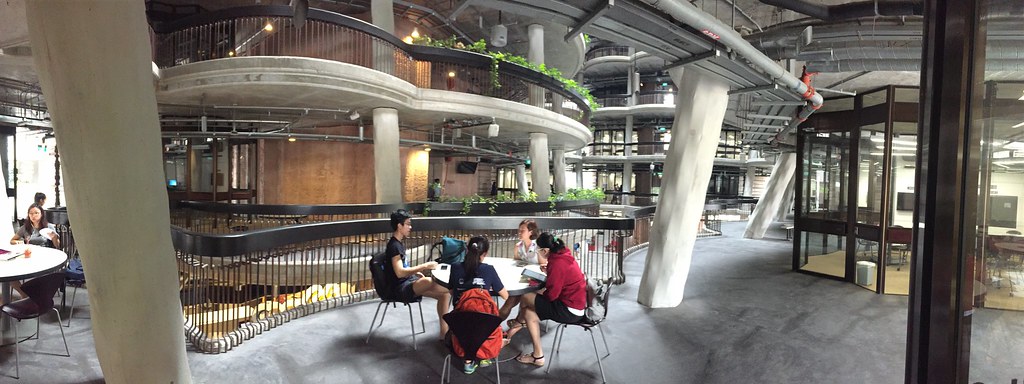As we move further towards collaborative learning and the integration of technology in education there is an increasing focus on how we design learning spaces, both physical and digital. Schools and colleges all over the world are building new facilities as well as redesigning existing spaces to facilitate and stimulate effective learning and collaboration. This was the focus of a conference I attended in Prague recently, Innovative learning spaces. The participants came from a wide range of fields, from architects to facilities management, from university leaders to teachers and e-learning specialists and that mix produced many good discussions.
As we move from seeing education as the transfer of information to active investigation, collaboration and meaning making we need to design learning spaces that facilitate this. Both physical and digital spaces are all too often designed for teacher-centred information transfer with limited or less than inspiring opportunities for discussion. The traditional lecture hall, classroom and to a certain extent traditional learning management systems are examples of this but many institutions are now redesigning these. Classrooms are becoming active learning classrooms, a model developed by the University of Minnesota, where students work in problem-solving groups with the teacher as facilitator. Lecture halls can be converted to a cabaret layout where students sit around tables to enable group work whilst the teacher contributes with short input from the front but is in general more of a facilitator/moderator.
One interesting approach suggested is to design learning spaces to mirror spaces we generally enjoy being in: parks, cafés, lounges, kitchens etc. If you create a familiar and comforable setting people will naturally gather there. For individual work there are many examples of cosy self-study areas with comfortable armchairs, screens for privacy and a quiet reflective ambience. Even indoor areas can be designed to feel like a park with plants and ponds and combining areas for group work with more secluded corners for quiet study. Even corridors can be transformed by providing furniture and fittings that can easily be arranged into areas for group work. We can't predict how people will use these spaces but if they are designed with flexibility in mind they can be adapted to suit the needs that emerge. At the same time the devil is often in the detail, those elements that are often overlooked such as availability of electricity sockets or placement of lights, see especially David Hopkins' post Learning spaces – are we doing enough?
Much of the conference's focus was naturally on transforming physical learning spaces but what about the digital arena? Up until recently digital spaces simply reproduced traditional teaching, closed-group teaching in the LMS, lecture capture systems and storage for countless PowerPoints and pdf files. Many of today's digital tools are simply too complex, trying to cram in too many features and options. All too often design and usability have been sacrificed and the result is the digital equivalent of the Swiss army knife; lots of functions but not very good at any of them.
Universities today often have several campus sites, often geographically far apart and so the one space that all staff and students have in common in the digital space. Isn't it time to devote more time and resources to redesigning our digital spaces? New buildings are extremely costly and are seldom even questioned whereas any significant investment in the digital spaces comes under intense scrutiny. One important concept developed during the conference by several speakers was that we should strive to fully integrate the physical and digital spaces and foster seamless learning. Students need to learn how to move easily between their physical and digital spaces and see them as all part of the learning process.
The overall impression I got from the conference is that there are plenty of exciting innovative developments taking place in the physical space. We saw lots of inspiring photos of new buildings and concepts that are transforming the concept of the university campus. In the digital space there are certainly inspiring examples of virtual and augmented reality applications as well as the increasing interest in gamification and simulation. However I feel that in order to fully realise the concept of seamless learning more work is needed in the digital space. How can we create the digital equivalents of the parks, cafés and lounges that are now becoming so central on campus? How do we design a digital campus that students feel comfortable with and integrates seamlessly with the physical spaces?
Presentations from the conference will be published in the near future I believe but in the meantime you are welcome to look through the slideshow of my own contribution.

No comments:
Post a Comment
Note: Only a member of this blog may post a comment.